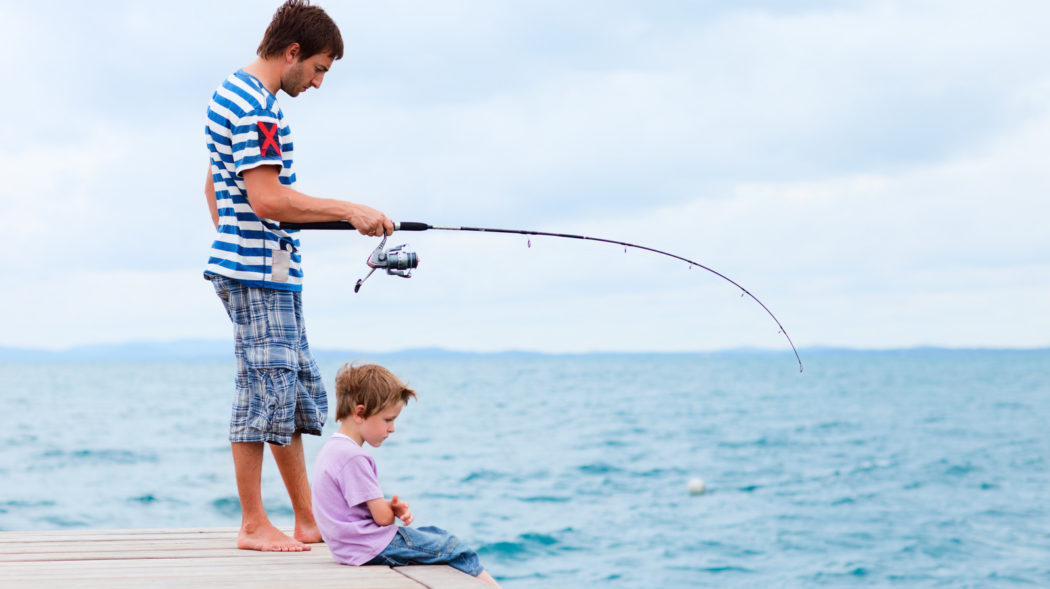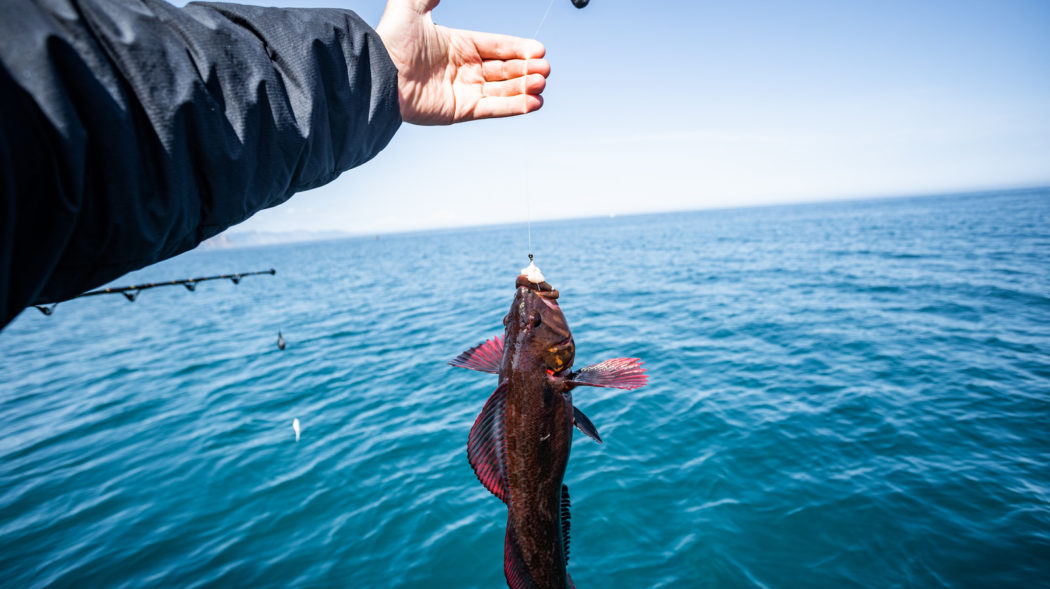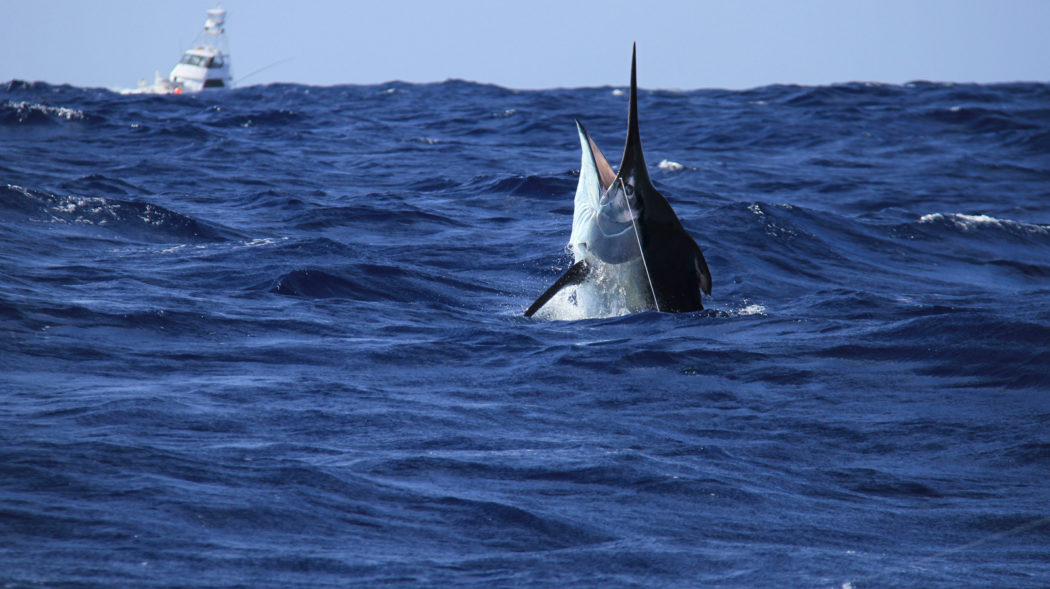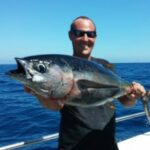What Is Inshore Fishing?

One of the most popular ways to fish is inshore fishing, which involves catching fish from much shallower waters than offshore fishing.
In this article, we’re going to compare and contrast inshore fishing with offshore fishing. We’ll explore how they vary in what fish you can catch, what the difference of equipment is and the kind of fishing techniques you can use.
You might also be interested in this article about the best inshore spinning reels.
Inshore vs Offshore Fishing
Inshore fishing, as the name suggests, involves catching fish from in or near what is considered to be inshore water. Inshore fishing is generally defined as any fishing in water up to 30 meters deep.
Offshore fishing (also called deep sea fishing or charter fishing) requires a boat and occurs in water that is more than 30 meters deep. An offshore fishing trip can be very expensive, and you’ll need to know what you’re doing (or hire an excellent guide) or else you might not catch anything to speak of on your fishing charter.
Can you use the same equipment for inshore and offshore fishing?
Generally inshore fishing requires lighter tackle and equipment, and is therefore more preferable for smaller game fish than larger ocean predators.
For inshore fishing you will need some way of safely getting around to the different inshore waters, and this is typically done with a boat (often with a trolling motor) or a motorized canoe or kayak. Sometimes, as we mentioned when talking about trolling, people may even use an outboard motor for inshore fishing if they think it’s necessary for the conditions they’re going to be fishing in.
On the whole inshore fisherman tend to have less equipment since what fish they catch are generally smaller fish too. Inshore fishermen can often get by without a boat, with fairly short rod lengths and so forth, whereas offshore fishermen need longer rods that allow them to cast further distances because their target fish are generally bigger and thus aren’t as likely to come inshore. Offshore fishermen will often use electric fishing reels to help them haul in those monsters from the deep.

What fish can you catch while inshore fishing?
You’ll generally catch smaller fish while inshore fishing but that doesn’t mean it’s still not great fun! Various types of inshore fish that fisherman catch include (but are certainly not limited to):
Bass
Bass are a type of fish that comes in different varieties. There is the largemouth bass which can grow up to 2 meters long, and the striped bass (which are often called rockfish…learn about what baits to use for rockfish here). Often, a spinning reel is a great choice for bass (typically best to go on the smaller end for some extra finesse).
Catfish
Saltwater catfish are another kind of inshore fish, although they are sometimes caught in offshore waters as well. They are some of the largest common inshore fish. When you caught saltwater catfish, enjoy cooking and eating them since they are safe to eat.
Bluegill
Bluegill are sometimes referred to as bream, which is one way they can be distinguished from sunnies; another way is by looking at their scales, which bluegills have whereas sunnies don’t
Speckled trout
Another kind of inshore fish are speckled trout which looks similar to a weakfish. As with most inshore fish, speckled trout have smaller scales than the larger offshore fish. And just like any other trout, speckled trout likes salmon eggs.
What fish will you only catch while offshore fishing?
Offshore fishing is where you have to go if you want to catch the really big fish that people like to eat. For example:
Tuna
Tuna is a common offshore fish, and typically the tuna you will catch are the bigeye, albacore or bluefin tuna species
Mahi Mahi
Mahi Mahi are a type of dolphin fish and can grow to 5 feet long or longer.
Wahoo
Wahoo can grow up to 8 feet long and weigh over 200 pounds.
Grouper
Grouper, although often caught offshore, can also sometimes be found inshore in deeper waters.
Marlin
Marlin are often caught in offshore waters, and there are two types of marlin; blue water marlin which live deeper, and white water marlin which live closer to the surface.

What kind of fishing do inshore fishermen do?
There are many different types of inshore fishing that fishermen do.
Trolling
One of the most common inshore fishing methods is trolling, which involves dragging a bait out behind the boat.
This method involves actively pulling your hooked line through the water. You will need something called an outboard motor to get around from place to place fairly efficiently.
Crabbing
Another common inshore fishing method is what people refer to as crabbing. Crabbing involves setting crab traps (with bait inside) in what is known as the ‘crabbing grounds’. The crabbing grounds is where the crabs tend to hang around, and typically what most fisherman consider a good crabbing ground will have the following characteristics:
– Somewhat shallow water that is moving quite quickly (this tends to attract crabs)
– Areas where you can find suitable places to put your crab traps (these may be areas where the shoreline is rocky or what have you)
– Plenty of food nearby for the crabs to eat
Line Fishing
Another type of inshore fishing is what is commonly known as line fishing which involves putting out your hook with whatever bait you’re using attached to it and waiting for fish to come along and bite.
Jigging
Jigging involves what’s called jigs, which are what the hooks on a line are attached to. The fisherman will stand in the water with what we call a jigging rod and then very quickly lift it up out of the water, letting it fall back down into the water as they do.
The reason why this works is because when you let your hook drop in the water like that your weight at the end of it is going to pull an angled path through the water and as fish come towards your bait they will follow that path along until they hit your hook; if you do this fast enough then a lot of fish can be caught in one session like this.
Fishing Traps
A variety of different traps are used for inshore fishing. Check out our guide on how to make your own fishing trap.
Drift Fishing
With inshore fishing, you can also drift fish. This involves casting your line with a bait attached to it out into the water and then drifting it along with the tide and letting the current do its work for you. Learn how to drift fish with our handy guide.
We also have an article here about rip rap fishing that you might be interested in.
In Summary
Inshore fishing is a lot of fun for those who want to stay near the shore and catch smaller fish that are fairly easy to reel in. For the fisherman, it can be an easier and more relaxing experience than offshore fishing.
Offshore fishing is where the really big fish live, so if you’re looking for a challenge or something new, then offshore fishing might be just what you’re looking for. It’s not as easy as inshore fishing because you need heavier tackle and you’re generally out on the water rather than staying close to shore. But it does offer some really spectacular sights and fish!
As an Amazon Associate, Fishermen's Angle earns from qualifying purchases. We get commissions for purchases made through links in this post.
